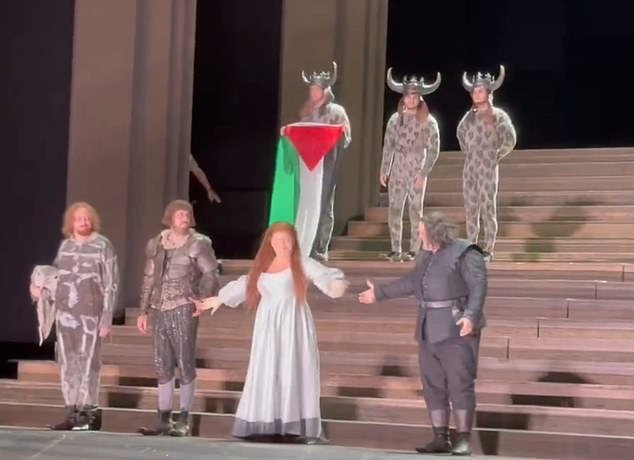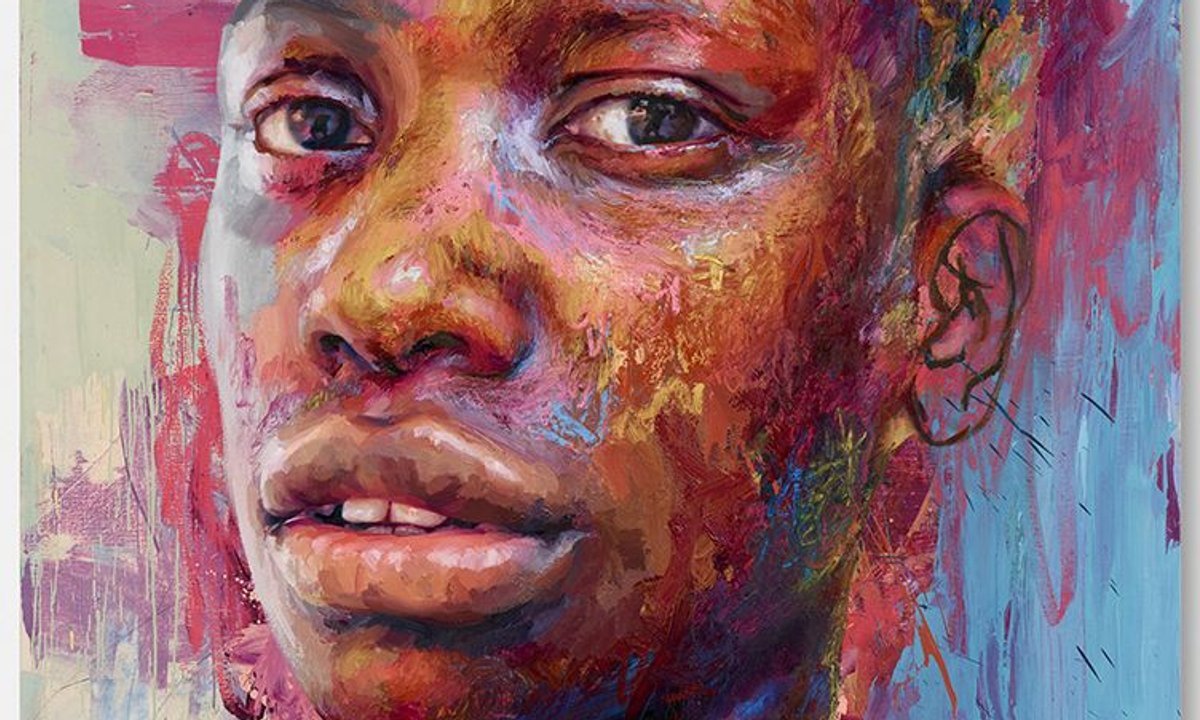“The ocean is a much better metaphor for time than any of the geometrical associations we have,” artist Sahana Ramakrishnan considered.
The Mumbai-born artist, who was raised in Singapore, recently debuted “An Ocean of Time” a debut solo exhibition with New York’s Fridman Gallery, a pulsating exhibition that delves into questions of time and the interconnectedness of all life with an electric sense of urgency.
The only child of two avid travelers, Ramakrishnan says her childhood instilled in her a deep reverence for the natural world. “Seeing the Great Barrier Reef in Australia was one of the most magical experiences of my entire life,” she explained in a phone call. “It imprinted on me. Now the reef is disappearing, and I’ve been thinking about all that will be gone in future generations. I felt this pull to make this body of work.”
Sahana Ramakrishnan, Self Portrait (2023). Courtesy of the artist and Friedman Gallery.
“An Ocean of Time” presents Ramakrishnan’s mediations on our connection to the ocean, from our earliest genesis and biblical floods to our current climate crisis of rising sea levels and warming temperatures.
Made within the past year, the works encompass large-scale oil-on-canvas works and a few smaller gem—like oil-on-canvas works adorned with gold leaf, rhinestones, mirrors, and graphite, plunging us into a fantastical world of primordial elements and emotions.
Color is strikingly employed, though, “always in the service of the story,” the artist explained. Regal, rich blues are built up in thin veils of pigment, creating oceanic visions that bridge both the natural and the subconscious worlds. “I wanted to translate that atmosphere—the depth and layering of seeing through water. Painting is a wonderful and metaphorical way to explore that,” she noted.
Burning reds and oranges appear in bursts, too, conjuring wildfires and sunsets. Fantastical, mystical, and mythological, men and women appear alongside majestic beasts—a wolf, a tiger, a water buffalo—and double snakes and circles that represent movement and metamorphosis in her visual lexicon.
Sahana Ramakrishnan, Cry Baby in the Deep (2023). Courtesy of the artist and Fridman Gallery.
The exhibition is also, in some ways, the artist’s personal meditation on healing and memory. Ramakrishnan practices Muay Thai, and after a recent trip to Bali with her fiancé, she discovered she had torn a knee ligament for the second time and required major surgery. “I had the surgery in February, and we had to delay this show,” she explained. “I couldn’t move and was stuck in bed. It was a time of digesting all I had researched in anticipation of the show, about the ocean, and about glazing processes, and time,” she recalled. “It all compressed into currents while I was lying down flat. I started reading Stephen Hawking’s A Brief History of Time and thinking about the fluid nature of time. In some ways, I was subjugated by my own memories during that time, with memories standing out as more important in my life. Encounters with animals stood out as particularly powerful.”
In creating these works, Ramakrishnan conducted research into Hindu and Norse myths, calling her process one of “groping, of moving from work to work.” Giant otters, bears, and coyotes are imagined as kinds of guides, offering clues as to hunting and weather patterns. Ramakrishnan’s artworks draw heavily from Tibetan traditions and formats, melding figuration into abstraction, the terrestrial into the spiritual.
“Buffaloes keep coming up for me, they’re heavy with the symbolism of abundance,” she noted of her painting, The Earth at Night (solar storm) (2023). In the nocturnal scene, a water buffalo’s head hovers in the night sky like a heavenly apparition. “The buffalo has pagan shaman roots, even in Tibetan Buddhism. The god of the dead is Yama. He was meditating in a cave, and someone chopped his head off, but he replaced it with the head of a buffalo.”
Her interests in religion and mythology are ecumenical. “I don’t trust individual mythologies or individual religions since you don’t know who’s got their hands in them,” she said, “But when there are overlaps—there must be moments of universal truth.”
Sahana Ramakrishnan, Song of the Naga (2023). Courtesy of the artist and Friedman Gallery.
Ramakrishnan’s own likeness appears in vignettes throughout the exhibition. One work, a self-portrait shows the artist in careful observation, but in other places, she is pulled into the mythical world of her creation. In her painting The Closing, her own body served as a scale for the body of a tiger. In other words, miniature forms of her figure can be scouted out.
In another, Cry Baby in the Deep (2023) she appears on a colossal scale, underwater, and weeping. The painting is based on illustrations of Alice in Wonderland.
“When Alice eats the wrong mushroom, she gets too big for the house and the house explodes around. I asked myself what would happen if she were underwater,” she said. “Here she’s creating a mess at the bottom of the ocean, which we’re also doing right now.” The painting draws from the artist’s own recovery process. “She’s crying because she’s too big. I was still relearning how to walk and having gone from being a very physical person, it was a trying experience when your body can’t do what you want,” she explained.
Detail of Sahana Ramakrishnan’s The Closing (2023). Courtesy of the artist and Fridman Gallery.
A meditative aspect is undeniable to these works as well, a push-and-pull of meaning that recalls the tides. Ramakrishnan often embeds circular handwritten mantras in translucent acrylic into the canvases, offering an almost sculptural framework (one reads, “In the ocean of time we can touch the past because it is no longer behind us but spirals up to us from the deep, curls back on itself from within a terrifying empty blue.”)
“The words don’t matter so much as the rhythm and energy that’s created,” she said, “In these works, I hope there is a harmony of form, a harmony we can reach for.”
“Sahana Ramakrishnan: An Ocean of Time” is on view at Fridman Gallery, New York, through October 21, 2023.
Follow Artnet News on Facebook:






